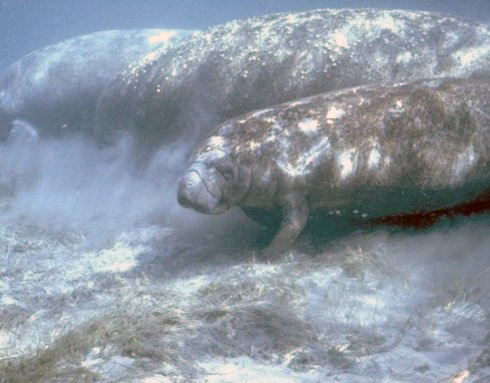Nature has created every critter different and unique. But, there are some who appear more alike enabling it hard to contrast between them. So, its time to list many more alike looking critters of the animal kingdom.
Two popular animals of the biological order Lagomorpha i.e. hare (1st image) and rabbit (2nd image) confuse us two. But, differences exist regarding their appearances and behaviors. Hares are larger and more speedy than rabbits. Even, their birth appearances is one ideal way of distinguishing which reveal their contrasts. The former's off springs (hare) are hairy and visually active while latter (rabbit) is being born hairless and blind.

Shelled critters of the animal kingdom also called as chelonians (tortoises and turtles) have one major difference i.e. their shells. Tortoises boast dome shaped shells while the latter has streamlined shells. Other differences are tortoises are mostly terrestrial while turtles are aquatic in nature. Diet wise, tortoises prefer veggies while turtles prefer omnivorous diet.

Two popular animals of the biological order Lagomorpha i.e. hare (1st image) and rabbit (2nd image) confuse us two. But, differences exist regarding their appearances and behaviors. Hares are larger and more speedy than rabbits. Even, their birth appearances is one ideal way of distinguishing which reveal their contrasts. The former's off springs (hare) are hairy and visually active while latter (rabbit) is being born hairless and blind.

Shelled critters of the animal kingdom also called as chelonians (tortoises and turtles) have one major difference i.e. their shells. Tortoises boast dome shaped shells while the latter has streamlined shells. Other differences are tortoises are mostly terrestrial while turtles are aquatic in nature. Diet wise, tortoises prefer veggies while turtles prefer omnivorous diet.

We would remain stunned upon a new revelation done by scientists that there aren't two but three species of camels. Along with Dromedary (one-humped) camel, two varieties of Bactrian camels exist i.e. domestic and wild. Thanks to their contrasts making it easier to contrast domestic individuals from wild. Domestic individuals boast dense and furry coats while the wild individuals boast scanty hairs and flatter skulls. So, now it makes sense that camels aren't just domestic but wild animals too.

When we hear the word 'bison', we refer to the brown, shaggy cattle like animal of North America also called as 'American buffalo'. But, one mustn't forget that the American bison (1st image) also has its larger cousin inhabiting the forests of Russia and Eastern Europe i.e. the European bison (Wisent) (2nd image).
Scientifically, both are bison. A bison is mostly referred to an American bison. But, even the European bison is also a bison. It boasts its own contrasts from its American cousin. The European bison (Wisent) boasts 14 ribs while the American bison boasts 15 ribs. Height is another feature with the European bison (Wisent) taller than its American cousin. Due to this, wisent (European bison) are designed for being a folivore (herbivore which predominantly feasts on leaves/ a browser) and its American cousin for being a graminivore (herbivore which predominantly feasts on grass/ a grazer).


So, both these posts would surely eliminate your confusion regarding these animals.
























